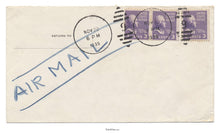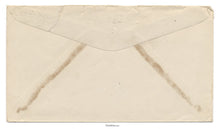When the folding sequence is such that the last flap to be closed is on a short side it is referred to in commercial envelope manufacture as a '"pocket"' - a format frequently employed in the packaging of small quantities of seeds. Although in principle the flaps can be held in place by securing the topmost flap at a single point (for example with a wax seal), generally they are pasted or gummed together at the overlaps. They are most commonly used for enclosing and sending mail (letters) through a prepaid-postage postal system.
Window envelopes have a hole cut in the front side that allows the paper within to be seen. They are generally arranged so that the sending address printed on the letter is visible, saving the sender from having to duplicate the address on the envelope itself. The window is normally covered with a transparent or translucent film to protect the letter inside, as was first designed by Americus F. Callahan in 1901 and patented the following year. In some cases, shortages of materials or the need to economize resulted in envelopes that had no film covering the window. One innovative process, invented in Europe about 1905, involved using hot oil to saturate the area of the envelope where the address would appear. The treated area became sufficiently translucent for the address to be readable. As of 2009 there is no international standard for window envelopes, but some countries, including Germany and the UK, have national standards



